Famine leaves Afghanistan ‘hanging by a thread’
In my 35 years as a reporter, I have never seen anything of this magnitude. More than 23 million people face starvation and a million children may die.
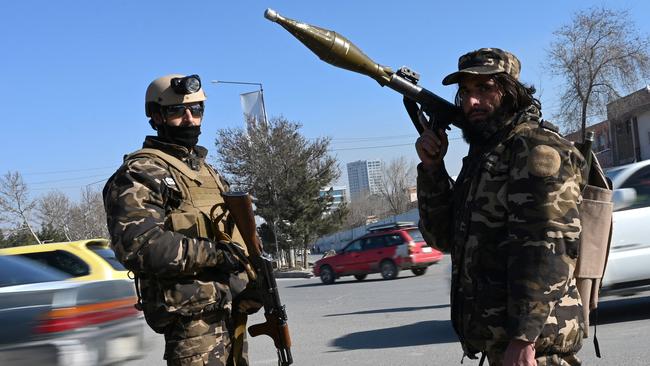
At the age of eight, Fatima’s future is decided. Her eyes limpid and far away, her clothes tattered emerald green, she would, she says, “like to go to school and study”. Instead, she has been sold in marriage to a man she has not met, to buy bread and time for her starving family.
In their mud-walled dwelling in western Kabul, Fatima sits on the floor around an unlit stove with her parents, siblings, widowed aunt and grandparents, all shivering, hungry and coughing. Family members proffer dirty plastic bags to me, each bearing stories of despair.
Her aunt holds a chest x-ray and a diagnosis for tuberculosis, which they have no money to treat, and a photograph of her bloody-faced eldest son killed by a suicide bomb last year. The grandfather tips out a few twigs, scraps of papers and rubbish collected from the street — their only fuel. The last bag is that of Fatima’s father, Lala Jan, from which he pulls out a charred shirt.

This is what he was wearing the night in 2010 when their house in Sangin was bombed during fighting between Taliban and British forces, leaving him so severely burnt that he spent eight months in hospital and displaced the whole family to the Afghan capital.
For a long while, he thought that was the worst day of his life.
But a few months ago, his family were so hungry that he sold Fatima for 150,000 Pakistani rupees ($1209) to buy food. Then last Wednesday things became so desperate, he tried to sell his three-month-old daughter Naghma, still wrapped in swaddling.
Now he looks round the shack where he lives with his wife, four children, parents, widowed aunt and other family members, and despairs. “I am having to choose between selling my daughters or all starving,” he said.
Eight pieces of bread a day to feed 30 people is the only aid the family receive. “It’s 20 days since we cooked even a potato,” his wife said.
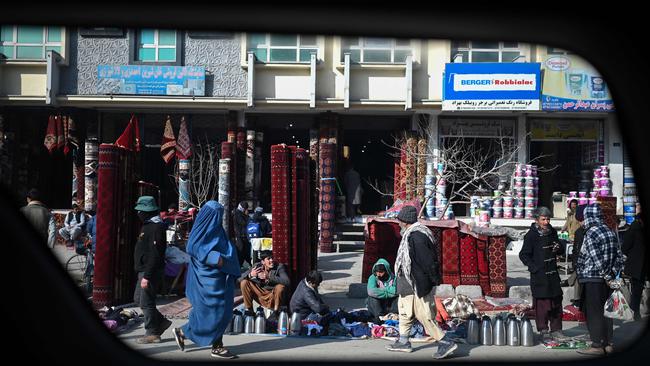
That day they will eat leftover rice from the night before given by a neighbour: nothing else. The stove is off despite temperatures that fall to -16C at night. None of the children goes to school. “How can they?” Lala Jan asks, pointing at their ragged clothes and bare feet. The only toy is a plastic comb one of the boys is playing with.
Lala Jan used to get work as a labourer, bringing in 300 Afghanis ($4.11) a day but he has had none since the Taliban took over in August and foreigners pulled out, prompting the collapse of the economy, which was largely dependent on foreign aid. The currency has lost almost half its value and prices have rocketed.
Occasionally his father earns 100 Afghanis cobbling or one of the women a few notes from begging.
Not only does Lala Jan have no income but he still owes 200,000 Afghanis for treatment to his burns. That morning the lenders had come to collect and he had offered them baby Naghma.
“I told them take my daughter, I have nothing else,” he said.
They said they would think about it.
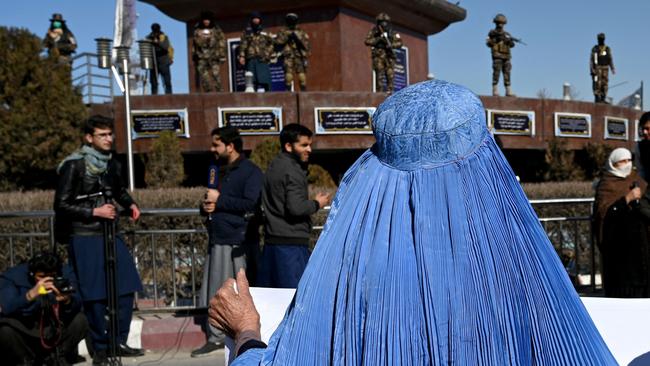
Fatima looks on silently. She will be collected when she reaches puberty. After that her fate will be in the hands of the family that bought her.
This is the reality of life in a country where according to the UN, 23 million people, more than half the population, face starvation and a million children may die. Already 97 per cent do not have enough to eat. “Afghanistan is hanging by a thread,” warned the UN secretary-general, Antonio Guterres, last week.
Not only is the country suffering the worst drought in 30 years, but also a bitterly cold winter, an overnight end to foreign aid and all the work it brought, and the freezing of $US9bn ($12.8bn) of government assets, meaning it cannot pay salaries. All this in a war-torn land that was already one of the poorest on earth and where millions have been widowed or disabled. Now it is feared more may die from hunger than the war.
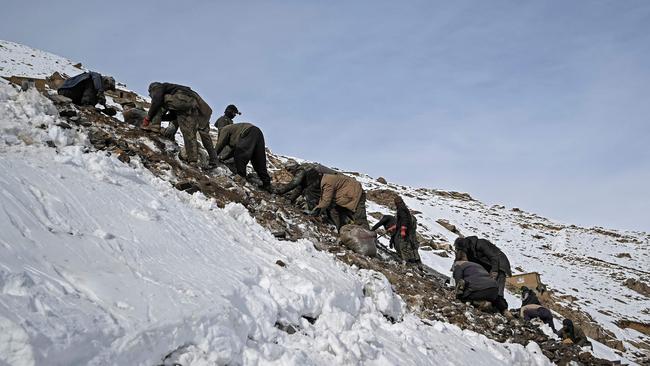
The person charged with trying to stop that happening is Mary-Ellen McGroarty, country director for World Food Program, an Irishwoman based in Kabul who takes no nonsense from the Taliban, even if they refuse to look her in the eye when talking to her.
It is a task she says keeps her awake at night. “It’s terrifying because of the scale of the crisis. Everything imploded so quickly. We’re doing everything possible to stop people starving to death but we don’t have space – we need to have done it yesterday. Children are dying already.
“I know how to respond to a drought but what do we do for economic implosion?” she adds. “If we don’t resuscitate the economy, humanitarian needs will escalate and 23 million starving will become 30 million.”
As a foreign correspondent for the past 35 years, I have seen too much famine, disease and death. But I have never seen anything of this magnitude. Here it is countrywide, it crosses social classes and it is happening before our eyes with far too little being done to mitigate it. All in a country into which the West poured billions in aid and military expenditure over the past 20 years.

It is not just the poor who are suffering. A few kilometres east of Lal Jan’s shack, in a nicer part of Kabul, Noor Agha, his wife and three daughters sit with their son Mukhtar, 27, and daughter-in-law Laila, 26, in an immaculately carpeted room with a tiled ceiling, flatscreen TV, and a line of pot plants on the window ledge.
Like most Afghan families, they had been touched by tragedy – their younger son killed in a suicide bombing at a wedding two years ago. All are university-educated, all had jobs, and they were comfortably off. Noor Agha worked for the human rights commission. Mukhtar was a military prosecutor. Laila, who speaks English, a manager in a translation office.
But when the Taliban took over, one after another they all lost their jobs. Two daughters were at university and the third, 17, was at high school. All were all sent home. Laila last got paid in September but the men not since July.
The day I visited, their only food was a cauliflower, which they would divide between lunch and dinner.
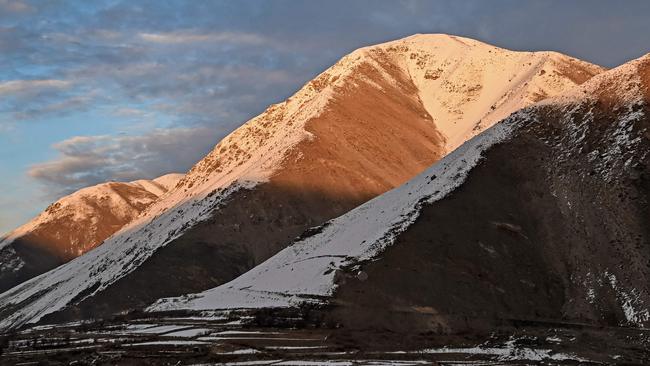
“I am mortified,” said Noor Agha, 54. “I have always budgeted well, given my family a good life, took them to restaurants and picnics and educated all my children. Never for a moment did I imagine overnight this would all be gone.
“What happened came from nowhere. If we had known we wouldn’t have spent money on a wedding.”
Two months before the Taliban swept into Kabul, they held a lavish ceremony for Mukhtar and Laila, attended by 200 people and costing $US6000, nearly half of it borrowed. Seven months on, Laila has already sold her wedding gold to buy food.
“Next will be my phone and bed,” she said. “We feel very hopeless. I loved going to work. Now we just spend the day looking at each other, talking about the situation and how can we survive.
“When we got married I thought I would have a baby but now I feel: how can I bring a child into this?”

The situation is even more desperate in rural areas. About 120km northeast of Kabul in Mahmud Raqi, Kapisa province, crowds of people are queuing to collect aid provided by the WFP. It is the fourth day of distribution in the area to collect 4000 Afghanis for a month per family, some of whom number 30.
“It’s a perfect storm,” said Abdul Rahim Yusufzai, deputy director of Heero, the local non-governmental organisation handing out the cash. “Around half the people in the area worked on a local military base, so all lost their jobs and the rest are farmers growing wheat, corn and grapes who lost most of their harvest because of the drought. Normally they would survive by getting day work but there is none.”
Heero will be handing aid to 4144 families classified as vulnerable or extremely vulnerable but Yusufzai admits it is not enough money given that a sack of flour costs 2500 Afghanis and a fraction of what is needed. He says at least 32,000 families in the area need help.
International Rescue Committee clinics have reported a thirtyfold increase in the number of acutely malnourished children over the past month alone.
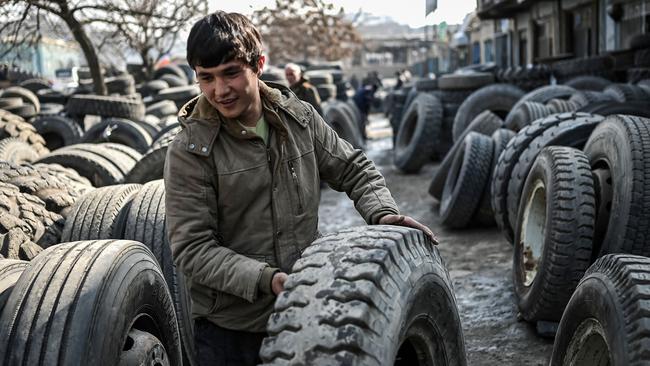
The WFP has received only $US700m of the $US2.6bn it says is needed this year just to keep the country on life support. “$US2.6bn may look like a gigantic number but for 23 million people that’s around 30 cents per person a day,” McGroarty said. “I don’t even want to talk about what will happen if we don’t get it.”
The international community remains conflicted about whether to help a country governed by a group that NATO forces have been fighting for 20 years, and many of whose members are under sanctions for terrorism, and are keeping women from work and the only place on earth girls are not going to high school.
Ten days ago two young women disappeared after taking part in protests that were pepper-sprayed by Taliban.
No one disputes the galling nature of the Taliban posting photos on Twitter of pallets of dollars in international aid being flown in amid such human rights concerns. But McGroarty says there is no choice.
“You cannot condition humanitarian support,” she insisted. “This is a country where 75 per cent of its budget was foreign assistance. If we don’t send money, people will die. Should the children of Afghanistan starve? Is that punishing the Taliban?”
The Taliban argue that withholding international support is a futile gesture.
“The effect of the suspension of aid is only hurting the people the international community supposedly cares about, particularly women and children,” smiled Abdul Qahar Balkhi, deputy spokesman for the Taliban. “It’s not harming me or the leadership. If they believe starving people to death will have the effect they desire – an uprising and toppling of this government – they’re sorely mistaken.”
THE SUNDAY TIMES

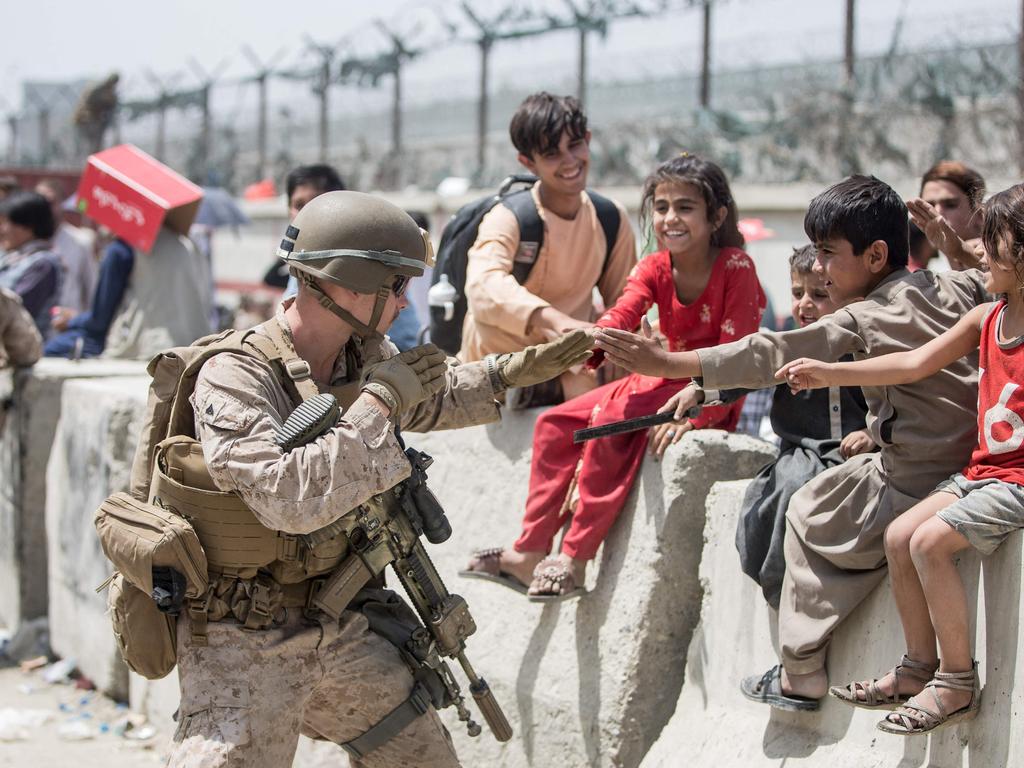
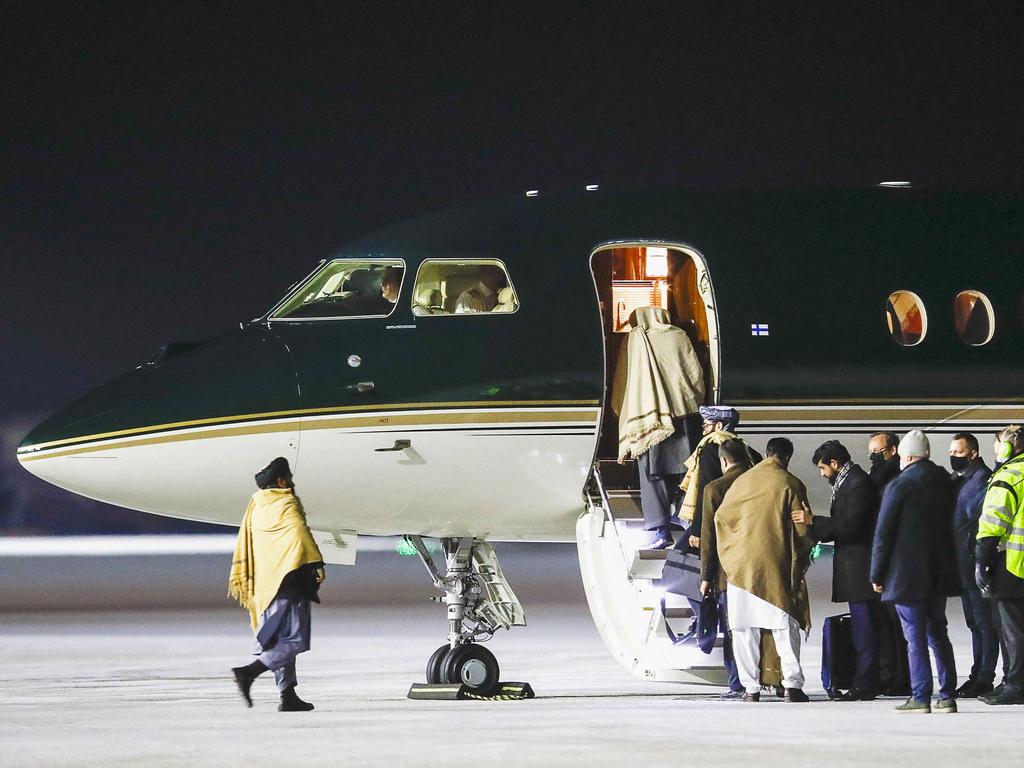
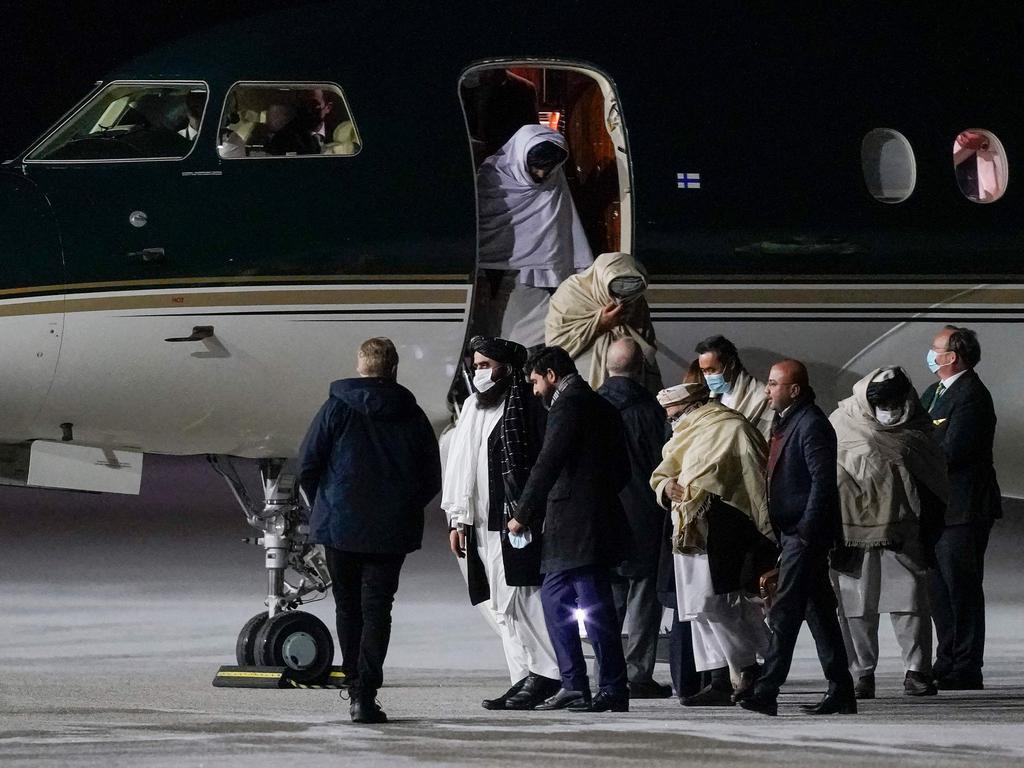


To join the conversation, please log in. Don't have an account? Register
Join the conversation, you are commenting as Logout